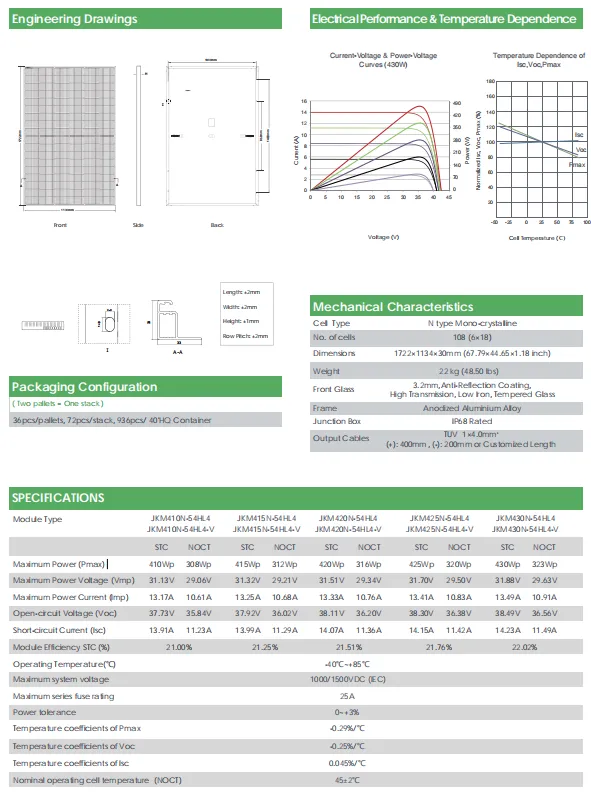solar cell efficiency
The Evolution of Solar Cell Efficiency Harnessing the Power of the Sun
Solar energy has emerged as a vital player in the pursuit of sustainable and renewable energy sources, playing an increasingly significant role in addressing the global energy crisis. The efficiency of solar cells, which directly impacts the amount of electricity generated from sunlight, has become a focal point of research and development. Over the years, advances in technology have dramatically improved solar cell efficiency, making solar energy more accessible and feasible for widespread use.
The basic principle of solar cells is the conversion of sunlight into electricity through the photovoltaic (PV) effect. Traditional silicon-based solar cells, which make up the majority of the market, have seen substantial efficiency improvements. Early solar cells, developed in the 1950s, achieved efficiencies of around 6%. Fast forward to today, and the most advanced silicon solar cells can reach efficiencies of over 26% in laboratory settings.
A significant contributor to this increase in efficiency is the development of multi-junction solar cells, which stack multiple layers of materials, each designed to absorb different parts of the solar spectrum. This innovation has pushed the boundaries of what is achievable in solar technology. For instance, some multi-junction cells used in concentrated photovoltaic systems have achieved efficiencies nearing 47%, although such cells are more expensive to manufacture and are primarily used in specialized applications, such as in space technology.
Research into alternative materials has also been pivotal in enhancing solar cell efficiency. Perovskite solar cells have gained attention for their superior performance, cost-effectiveness, and ease of manufacturing. These materials can be processed using simple techniques, opening the door to mass production. Perovskite cells have demonstrated efficiency rates exceeding 25% in just a few years of research, making them a promising candidate for the future of solar technology. However, challenges such as stability and toxic lead content need to be addressed before they can be widely adopted in commercial applications.
solar cell efficiency

Another avenue of innovation lies in the field of thin-film solar cells. Technologies like cadmium telluride (CdTe) and copper indium gallium selenide (CIGS) offer flexible and lightweight solutions that can be integrated into building materials or other surfaces. While thin-film cells typically have lower efficiencies compared to silicon-based counterparts, their lower production costs and versatility make them an attractive option for many applications. Recent advances have significantly increased their efficiencies, indicating that they hold a place in the future of solar technology.
Efficiency is not just about maximizing energy conversion rates; it’s also crucial to consider the entire lifecycle of solar technology, including installation, maintenance, and recycling. The environmental impact of manufacturing solar cells must be minimized to ensure they are truly a sustainable energy solution. Efforts are underway to develop more environmentally friendly materials and recycling processes that can recover valuable components from end-of-life solar panels.
Government policies and incentives play a vital role in promoting the adoption of solar technology and encouraging research into more efficient solar cells. Feed-in tariffs, tax credits, and grants for renewable energy projects have spurred investment in solar technology, leading to rapid improvements and wider acceptance of solar energy solutions.
As we look to the future, the combination of enhanced efficiency, advancements in materials science, and supportive policies will likely result in continued growth for the solar energy sector. As efficiencies improve, the cost of solar energy will decrease, making it an even more attractive option for both residential and commercial energy needs.
In conclusion, the journey toward higher solar cell efficiency is a testament to human ingenuity and the quest for sustainable energy solutions. From the days of early silicon cells to the cutting-edge technologies of today, solar energy holds the promise of a cleaner, more sustainable future. As we refine and innovate solar technology, we take significant steps toward reducing our carbon footprint and ensuring energy security for generations to come. The road ahead is filled with potential, and the sun’s abundant energy is waiting to be harnessed.
-
Understanding the Advantages of Solar String Inverters for Your Energy SystemNewsApr.29,2025
-
Choosing the Right PV Inverter: A Comprehensive GuideNewsApr.29,2025
-
The Future of Solar Power: Exploring Bifacial Solar PanelsNewsApr.29,2025
-
The Complete Guide to Solar Panels: Efficiency, Cost, And InstallationNewsApr.29,2025
-
The Best Options for Efficiency and Cost-EffectivenessNewsApr.29,2025
-
Harnessing the Power of Off-Grid Solar Inverters for Energy IndependenceNewsApr.29,2025







